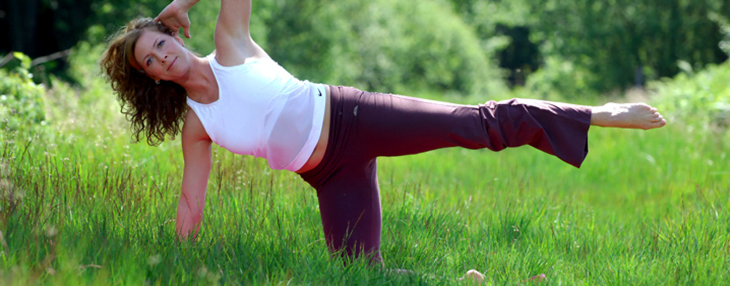

Get to know your body again and experience a changed feeling of movement in everyday life.
Pilates
Pilates is a holistic movement concept, which above all promotes an upright posture and a good body awareness. A strong “middle” and controlled movement in combination with relaxing phases gently train body, mind and soul. Get to know your body again and experience a changed feeling of movement in everyday life.
The following seven Pilates bodymotion principles will show you the Pilates method as we have learned and pass it on.
Breathing
Breathing is a fundamental part of our existence. Without the breath our organism would not be supplied with oxygen, which our body needs to carry out all its processes. Therefore, the most important principle in Pilates is respiration. It significantly supports the quality of the movement and promotes an economic execution of the exercises.
Alignment
Alignment is the ideal alignment of the body that makes up a good posture. Attitude is not clinging, but a constant finding of your balance. With your head raised, your eyes open, your shoulders relaxed and your spine mobile, you will master your everyday life with a new lightness.
Centering
Centering means activating the abdominal and pelvic floor muscles, with which we build a stable “middle”. Starting from this center, arms and legs can be moved easily and efficiently.
Laxity and relaxation
In everyday life and with the burden we carry on a daily basis, these two components often fall by the wayside. In the Pilates we learn to perform movements with as much force as necessary and as little possible.
Joint articulation
At the center of this principle is our spine. The column as a rigid element may be seen here as a moving part of our body. Only a flexible spine can do justice to its supporting function with the help of a balanced musculature.
Movement length and width
The basis of this principle is a long spine and a wide shoulder girdle. Through expansive movements, the range of motion is to be increased.
Shoulder girdle Organization
Stress and tension often manifest in the shoulder and neck area. Through the shoulder girdle organization we learn in the Pilates to banish the burdens from there to restore both physical and mental balance.
After a posture analysis, we will work out a training together that will both improve your weaknesses and highlight your strengths.
In our lessons, I integrate the following tools:
Theraband, Pezziball, towels, Pilates ball, air cushions, foam rollers etc.
These aids can be used to support and to intensify the exercises.
